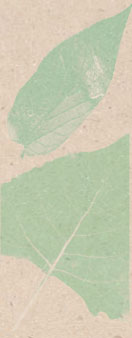|

|
Resources
Brownfields
Climate Change
Environmental Justice Links
- Diversity Data: www.diversitydata.org
Diversitydata.org allows you to explore how metropolitan areas throughout the U.S. perform on a diverse range of social measures. These data call attention to the equality and inequality of opportunity and diversity of experiences for different racial and ethnic groups in America.
- Urban Environment Report: www.earthday.net/UER/report/index.html
Earth Day Network’s Urban Environment Report (UER) scores the current environmental performance of 72 of our nation’s cities based on over 200 indicators, taking into account those populations
which may have greater sensitivity or susceptibility to environmental,
health, and social problems.
- Women’s Health and the Environment: www.womenshealthandenvironment.org
- Denver’s Neighborhood Facts Databook 2004
This publication covers eight topics, including population, race and ethnicity,
immigration, households and families, education, jobs and wages, poverty
and housing. Each chapter highlights differences between Denver and
its suburbs and differences among Denver’s 77 neighborhoods. [Download
PDF file]
- Groundwork Denver’s “Best
Practices for Engaging the Spanish Speaking Community in Environmental
Health, Environmental Justice, and Environmental Quality Issues” [Download PDF file]
- Toxic Waste and Race at Twenty: 1987-2007:
In 1987 the United Church of Christ released its groundbreaking study
Toxic Waste and Race in the United States that laid much of the foundation
for today’s environmental justice movement. This is the follow-up
document that shows that 20 years later, racial and ethnic disparities
in sitting toxic waste sites are even greater than previously reported. [Download
PDF file]
- Health, Equity and the Built Environment www.ehponline.org/docs/2005/113-5/editorial.html Author
Howard Frumkin explains how the environmental justice and the built the
environment intersect to effect the health of poor people and people
of color.
Health and Environment
- Nature Adds Up for Kids with ADD: Researchers
have found that attention deficit disorder (ADD) symptoms in children
are relieved after contact with nature. [Download
PDF file]
- Nature Deficit Disorder
http://www.npr.org/templates/story/story.php?storyId=4665933 In the last 30 years, children of the digital age have become increasingly alienated from the natural world, with disastrous implications for their physical fitness and long-term mental and spiritual health.
- The Benefits of Parks: City parks
and open space improve our physical and psychological health, strengthen
our communities, and make our cities more attractive places to live
and work. [Download
PDF file]
- Metro Denver Health and Wellness Commission: www.mdhwc.org
- Denver Healthy People 2010: www.denvergov.com/hp2010
- The Built Environment and Health: In
recent years, the public health community has become increasingly
aware that the design of the built environment can have a major impact
on the health of the public. [Download
PDF file]
Lead Poisoning
Other Environmental Information Links
- eChemPortal: webnet3.oecd.org/echemportal
eChemPortal offers free public access to information on properties of chemicals including
Ecotoxicity and toxicity. eChemPortal gives access to data submitted
to government chemical review programs at national, regional, and international
levels.
- Greenprint Denver: www.greenprintdenver.org
The City of Denver’s comprehensive environmental initiative website.
Other Resourceful Organizations
|
 |
|





